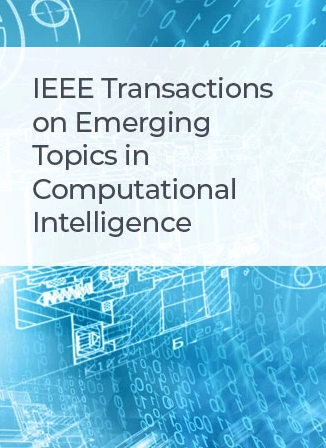不完全多视图聚类的双完成学习
IF 5.3
3区 计算机科学
Q1 COMPUTER SCIENCE, ARTIFICIAL INTELLIGENCE
IEEE Transactions on Emerging Topics in Computational Intelligence
Pub Date : 2024-09-13
DOI:10.1109/TETCI.2024.3451562
引用次数: 0
摘要
不完整多视图聚类(IMVC)提供了一种分析不完整数据的方法,通过补全技术促进对未观察到和缺失数据点的推断。然而,现有的 IMVC 方法主要依赖于数据补全或相似性矩阵补全,无法揭示视图内和视图间固有的几何结构和潜在的互补信息,导致不完整的相似性矩阵进一步撕裂了视图间的联系。针对这一问题,我们提出了不完整多视图聚类的双重完成学习(Dual Completion Learning for Incomplete Multi-view Clustering,DCIMC),它精心设计了数据完成和相似性张量完成,并将二者融合为一个统一的模型,从而有效地恢复缺失的样本和相似性。具体来说,在数据补全中,DCIMC 利用子空间聚类直接恢复缺失和未知实例。同时,在相似性张量补全中,DCIMC 引入了张量补全的思想,以更好地利用多视角数据的高阶互补信息。通过融合双重补全,每个补全中的缺失信息和互补信息都能被对方充分挖掘,相互促进,从而提高聚类算法的准确性。在各种数据集上的实验结果表明了所提出的 DCIMC 的有效性。此外,在与近期基于深度学习的多视图聚类算法的扩展比较中,我们的 DCIMC 也取得了优异或相当的性能。本文章由计算机程序翻译,如有差异,请以英文原文为准。
Dual Completion Learning for Incomplete Multi-View Clustering
Incomplete Multi-View Clustering (IMVC) offers a way to analyze incomplete data, facilitating the inference of unobserved and missing data points through completion techniques. However, existing IMVC methods, predominantly depending on either data completion or similarity matrix completion, failed to uncover the inherent geometric structure and potential complementary information between intra- and inter-views, causing incomplete similarity matrices to further tear apart the connections between views. To address this problem, we propose Dual Completion Learning for Incomplete Multi-view Clustering (DCIMC), which elaborately designs data completion and similarity tensor completion, and fuses both of them into a unified model to effectively recover the missing samples and similarities. Concretely, in data completion, DCIMC utilizes subspace clustering to recover the missing and unknown instances directly. Meanwhile, in similarity tensor completion, DCIMC introduces the idea of tensor completion to make better use of the high-order complementary information from multi-view data. By fusing the dual completions, missing information and complementary information in each completion are fully explored by each other, reciprocally enhancing one another to boost the accuracy of our clustering algorithm. Experimental results on various datasets show the effectiveness of the proposed DCIMC. Moreover, our DCIMC also achieved superior or comparable performance in an extended comparison with recent deep learning-based multi-view clustering algorithms.
求助全文
通过发布文献求助,成功后即可免费获取论文全文。
去求助
来源期刊

IEEE Transactions on Emerging Topics in Computational Intelligence
Mathematics-Control and Optimization
CiteScore
10.30
自引率
7.50%
发文量
147
期刊介绍:
The IEEE Transactions on Emerging Topics in Computational Intelligence (TETCI) publishes original articles on emerging aspects of computational intelligence, including theory, applications, and surveys.
TETCI is an electronics only publication. TETCI publishes six issues per year.
Authors are encouraged to submit manuscripts in any emerging topic in computational intelligence, especially nature-inspired computing topics not covered by other IEEE Computational Intelligence Society journals. A few such illustrative examples are glial cell networks, computational neuroscience, Brain Computer Interface, ambient intelligence, non-fuzzy computing with words, artificial life, cultural learning, artificial endocrine networks, social reasoning, artificial hormone networks, computational intelligence for the IoT and Smart-X technologies.
 求助内容:
求助内容: 应助结果提醒方式:
应助结果提醒方式:


